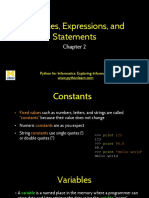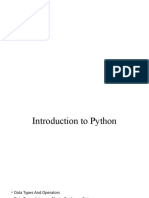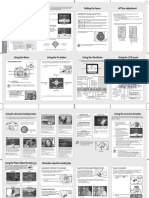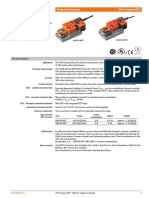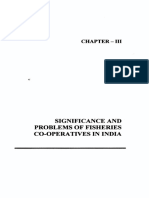0% found this document useful (0 votes)
114 views8 pagesPython Token (2023-24)
The document defines basic fundamental terms of Python including comments, tokens, identifiers, keywords, literals, operators, variables, data types, delimiters/punctuators, escape sequences, and type conversion. Comments are used to explain code and prevent execution. Tokens are the smallest units in a program. Identifiers name variables and keywords are reserved words.
Uploaded by
Bijaya Kumar MishraCopyright
© © All Rights Reserved
We take content rights seriously. If you suspect this is your content, claim it here.
Available Formats
Download as PDF, TXT or read online on Scribd
0% found this document useful (0 votes)
114 views8 pagesPython Token (2023-24)
The document defines basic fundamental terms of Python including comments, tokens, identifiers, keywords, literals, operators, variables, data types, delimiters/punctuators, escape sequences, and type conversion. Comments are used to explain code and prevent execution. Tokens are the smallest units in a program. Identifiers name variables and keywords are reserved words.
Uploaded by
Bijaya Kumar MishraCopyright
© © All Rights Reserved
We take content rights seriously. If you suspect this is your content, claim it here.
Available Formats
Download as PDF, TXT or read online on Scribd
/ 8



























